Cast Iron Seasoning…What’s It All About?
Jillee over at www.onegoodthingbyjillee.com, did her research on the ins and outs of seasoning cast iron cookware. I want to share with you what she had to say in her latest newsletter—it’s encouraging—this is actually an easy process.
First of all, what is cast iron seasoning all about? The “seasoning” refers to a layer of baked-on oil and fat that adheres to the cast iron surface through a process called polymerization. The polymerized oil layer gives cast iron its signature black patina, creates a non-stick coating that helps food release more easily from the cooking surface. Its other important feature is that it helps prevent rust, one of the very few drawbacks of using cast iron.
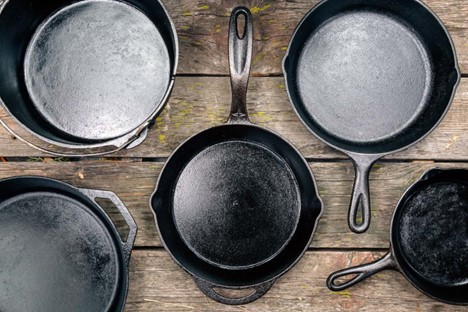
Today, new cast iron skillets come pre-seasoned, which means they are ready to cook with as soon as you take them out of the box. That means you only need to worry about maintaining their cast iron’s seasoning, rather than starting from scratch.
But the “maintaining” is the other important piece of the story. Seasoned cast iron does require consistent maintenance. But that’s easy, because the best way to maintain it is to cook with it regularly! In other words, every time you cook with oil or fat in cast iron cookware, you reinforce that seasoned layer.
You also want to know that there are certain behaviors and conditions that will weaken cast iron seasoning. You want to avoid using extremely high heat. You always want to avoid cooking with highly acidic foods, such as tomatoes. Use another pan for any recipes involving tomatoes. And lastly, avoid overly aggressive scrubbing. High heat, acidic foods, and ruthless scrubbing will all but remove its seasoning.
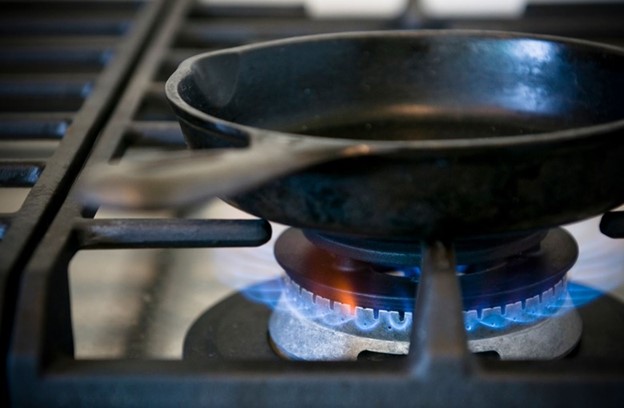
One last thought: In addition to cooking in it regularly, you can also season a cast iron pan using your oven. For those of us that have older, more vintage cast iron, this is nice to know. Using this oven method a few times a year can help you build and maintain a strong, even layer of seasoning and keep your cast iron in good condition. Here’s the process:
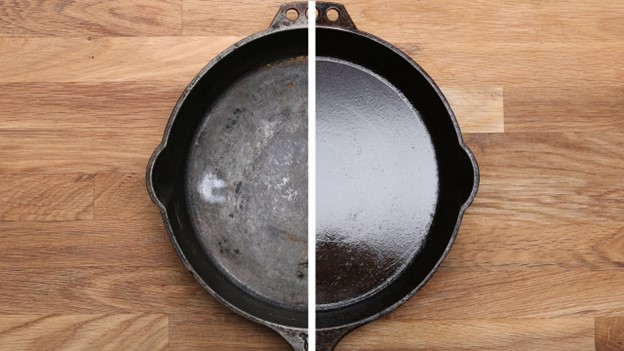
Finally, although the method above uses vegetable oil, there are other oils or fats you can use to season cast iron. In fact, technically, you can use any cooking or oil fat to maintain the seasoning. For many years, people seasoned their pans with lard, but that may not be the best choice if you if you don’t cook with your cast iron pan(s) very often.
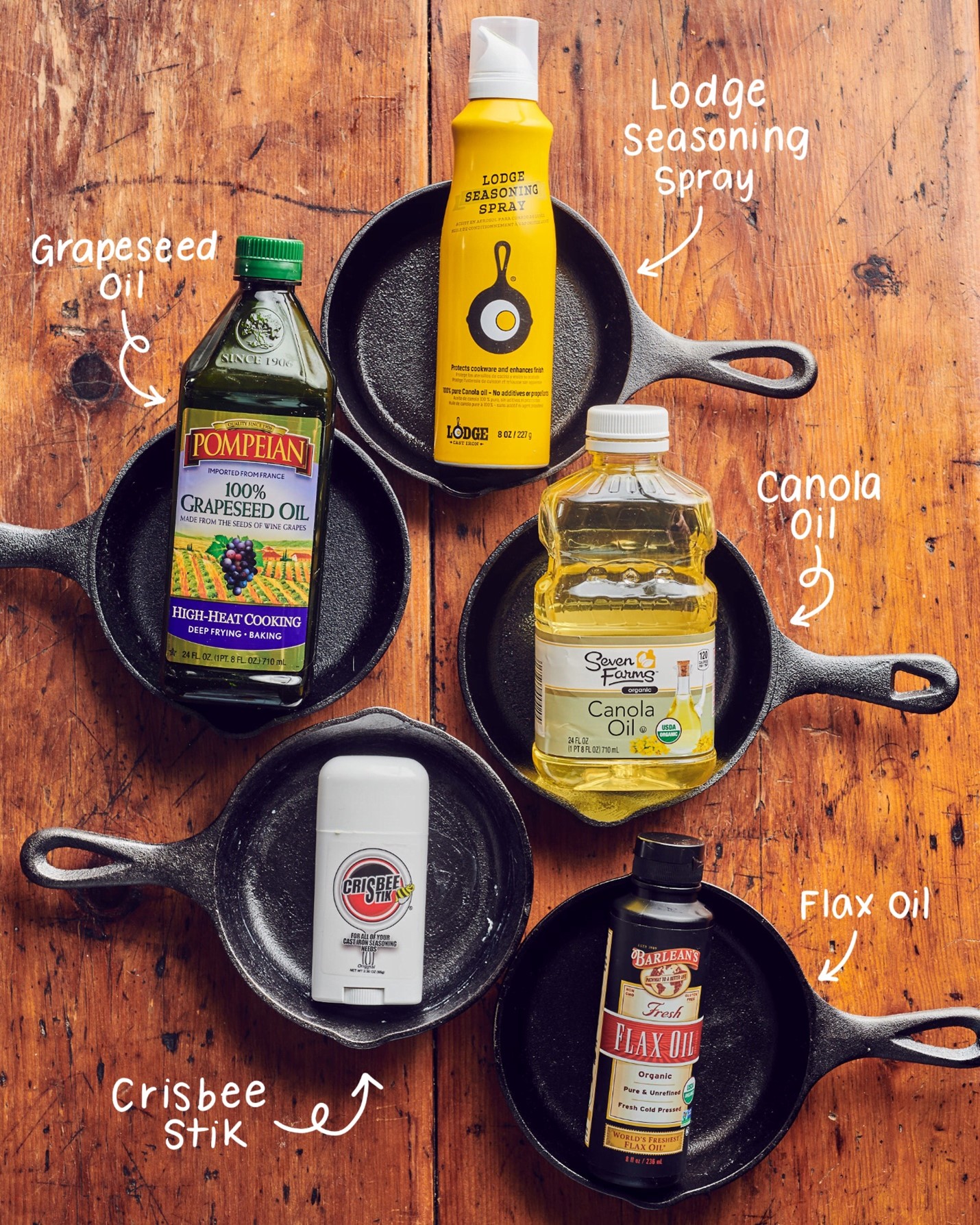
Lard and other animal fats are prone to spoiling if they’re allowed to sit around for too long. Cast iron manufacturers recommend using vegetable oil, flaxseed oil, grapeseed oil, or canola oil, because they’re less likely to spoil than animal fats.
blog comments powered by Disqus
First of all, what is cast iron seasoning all about? The “seasoning” refers to a layer of baked-on oil and fat that adheres to the cast iron surface through a process called polymerization. The polymerized oil layer gives cast iron its signature black patina, creates a non-stick coating that helps food release more easily from the cooking surface. Its other important feature is that it helps prevent rust, one of the very few drawbacks of using cast iron.

Today, new cast iron skillets come pre-seasoned, which means they are ready to cook with as soon as you take them out of the box. That means you only need to worry about maintaining their cast iron’s seasoning, rather than starting from scratch.
But the “maintaining” is the other important piece of the story. Seasoned cast iron does require consistent maintenance. But that’s easy, because the best way to maintain it is to cook with it regularly! In other words, every time you cook with oil or fat in cast iron cookware, you reinforce that seasoned layer.
You also want to know that there are certain behaviors and conditions that will weaken cast iron seasoning. You want to avoid using extremely high heat. You always want to avoid cooking with highly acidic foods, such as tomatoes. Use another pan for any recipes involving tomatoes. And lastly, avoid overly aggressive scrubbing. High heat, acidic foods, and ruthless scrubbing will all but remove its seasoning.

One last thought: In addition to cooking in it regularly, you can also season a cast iron pan using your oven. For those of us that have older, more vintage cast iron, this is nice to know. Using this oven method a few times a year can help you build and maintain a strong, even layer of seasoning and keep your cast iron in good condition. Here’s the process:

- CLEAN THE PAN. Start by washing the pan with warm water lightly using a scrub brush, if necessary. (Normally you wouldn’t want to clean your cast iron quite so thoroughly in order to keep the seasoning intact, but that’s not a concern here as you’ll be reinforcing it shortly.)
- DRY IT THOROUGHLY. Once your cast iron pan or skillet is clean, dry it thoroughly using several paper towels. (Using a dish towel isn’t a great idea because chances are very sure you’ll be wiping a little rust away.) It’s important to make sure it’s completely dry before moving on to the next step, as lingering moisture can lead to rusting. After wiping dry, set the pan on a medium heat stove burner for a minute or two to ensure all moisture is evaporated.
- COAT WITH OIL. When the pan is dry, pour a bit of vegetable oil onto a paper towel and use it to spread a thin, even layer of oil over the surface of the pan (inside as well as outside). Be thorough without using too much oil. If the layer of oil is too thick, it will tend to get tacky rather than polymerize correctly.
- BAKE THE PAN. Next, place your cast iron pan upside down on the middle rack of your oven, and bake it at 400°F for about an hour. (The oil shouldn’t drip, but it wouldn’t hurt to place a sheet pan on the lower rack of your oven, just to be safe.)
- LET IT COOL. After baking the pan, turn off the oven and leave the pan inside to cool. Once it’s cool enough to handle, it’ll be properly seasoned and ready to use.
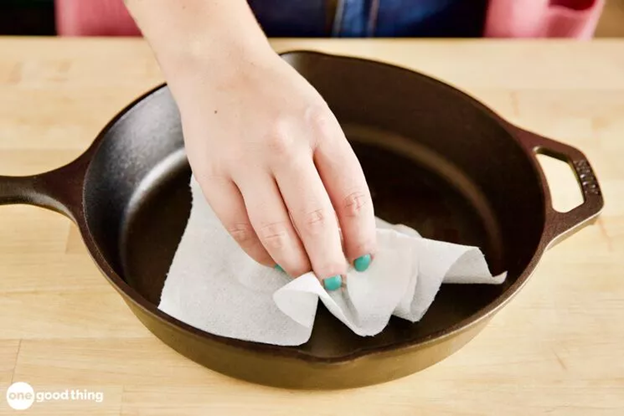
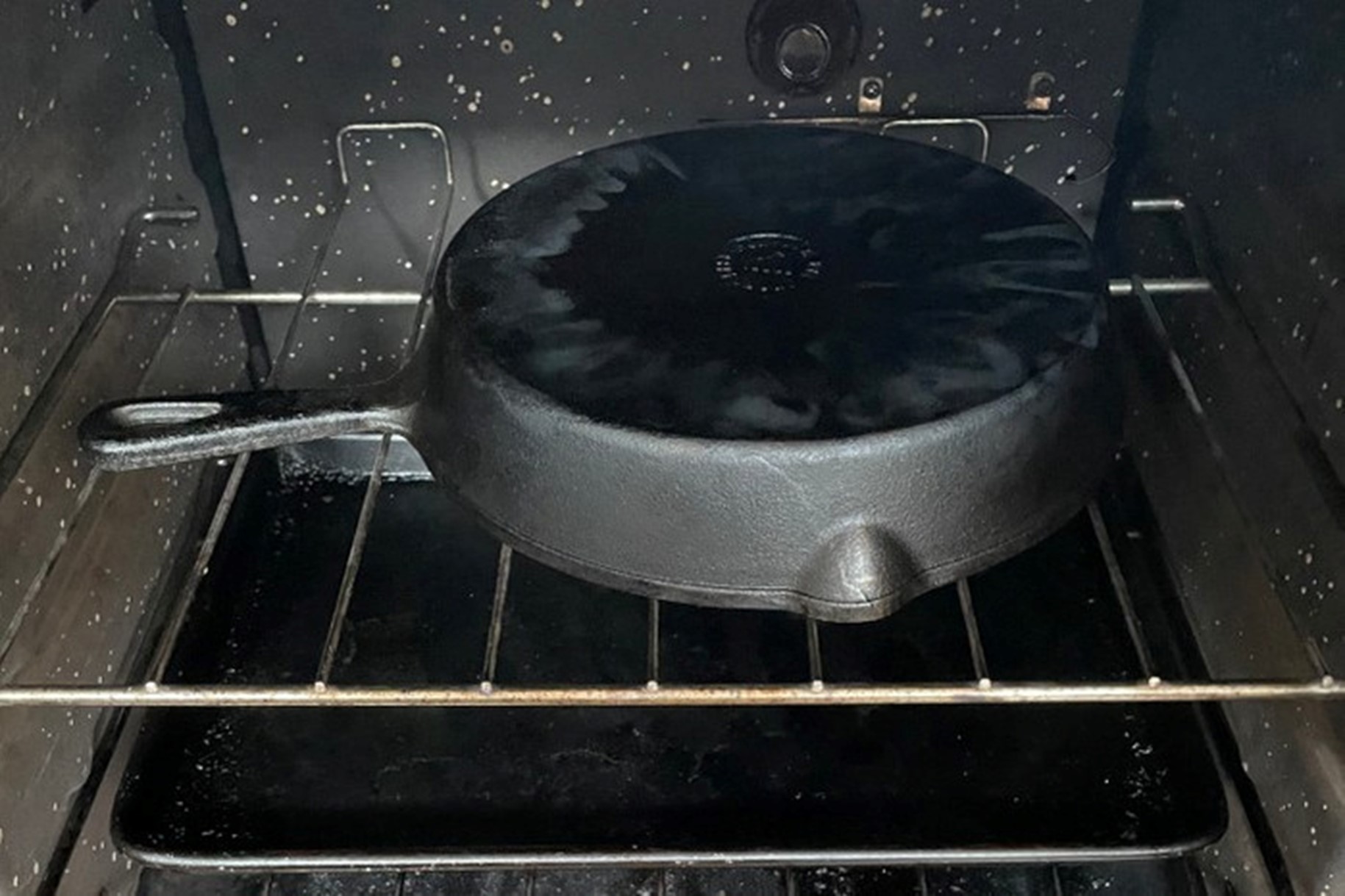
Finally, although the method above uses vegetable oil, there are other oils or fats you can use to season cast iron. In fact, technically, you can use any cooking or oil fat to maintain the seasoning. For many years, people seasoned their pans with lard, but that may not be the best choice if you if you don’t cook with your cast iron pan(s) very often.

Lard and other animal fats are prone to spoiling if they’re allowed to sit around for too long. Cast iron manufacturers recommend using vegetable oil, flaxseed oil, grapeseed oil, or canola oil, because they’re less likely to spoil than animal fats.
 Alice Osborne
Alice Osborne
Weekly Newsletter Contributor since 2006
Email the author! alice@dvo.com
Sources:
- www.bbcgoodfood.com
- www.thedailymail.com
- www.onegoodthingbyjillee.com
- www.freshoffthegrid.com
